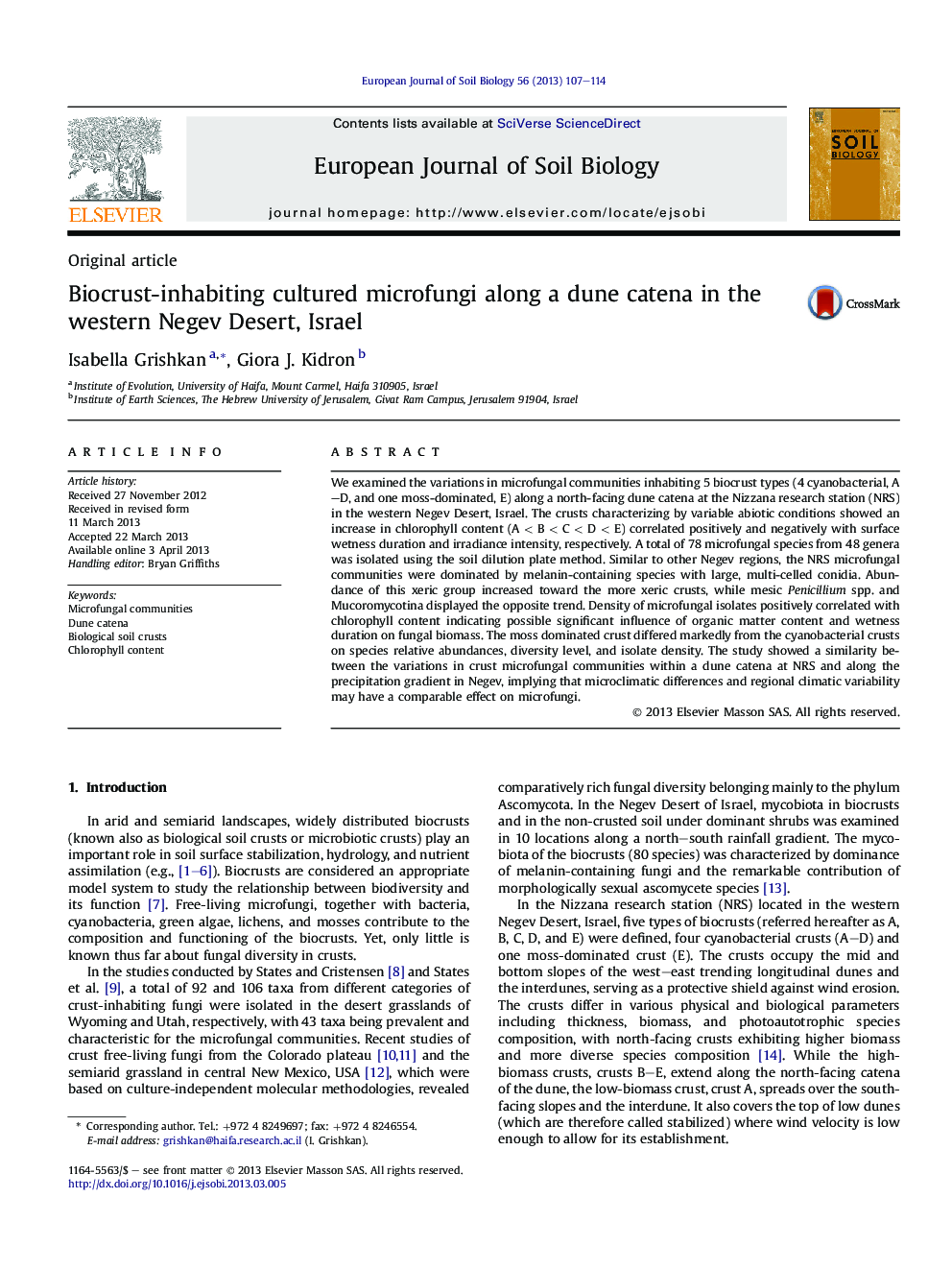| Article ID | Journal | Published Year | Pages | File Type |
|---|---|---|---|---|
| 4392015 | European Journal of Soil Biology | 2013 | 8 Pages |
Abstract
We examined the variations in microfungal communities inhabiting 5 biocrust types (4 cyanobacterial, A-D, and one moss-dominated, E) along a north-facing dune catena at the Nizzana research station (NRS) in the western Negev Desert, Israel. The crusts characterizing by variable abiotic conditions showed an increase in chlorophyll content (AÂ <Â BÂ <Â CÂ <Â DÂ <Â E) correlated positively and negatively with surface wetness duration and irradiance intensity, respectively. A total of 78 microfungal species from 48 genera was isolated using the soil dilution plate method. Similar to other Negev regions, the NRS microfungal communities were dominated by melanin-containing species with large, multi-celled conidia. Abundance of this xeric group increased toward the more xeric crusts, while mesic Penicillium spp. and Mucoromycotina displayed the opposite trend. Density of microfungal isolates positively correlated with chlorophyll content indicating possible significant influence of organic matter content and wetness duration on fungal biomass. The moss dominated crust differed markedly from the cyanobacterial crusts on species relative abundances, diversity level, and isolate density. The study showed a similarity between the variations in crust microfungal communities within a dune catena at NRS and along the precipitation gradient in Negev, implying that microclimatic differences and regional climatic variability may have a comparable effect on microfungi.
Related Topics
Life Sciences
Agricultural and Biological Sciences
Soil Science
Authors
Isabella Grishkan, Giora J. Kidron,
